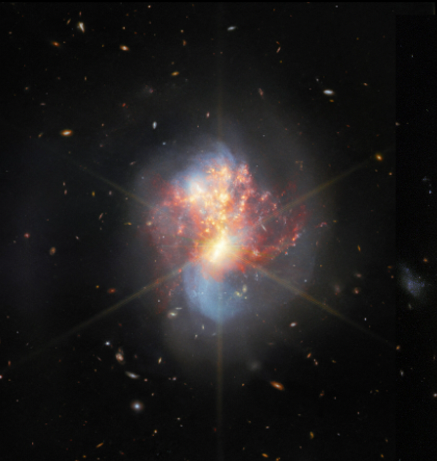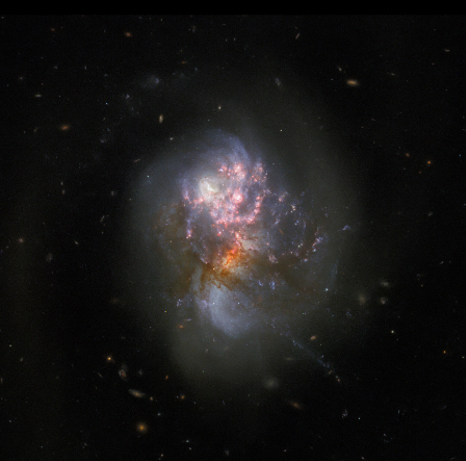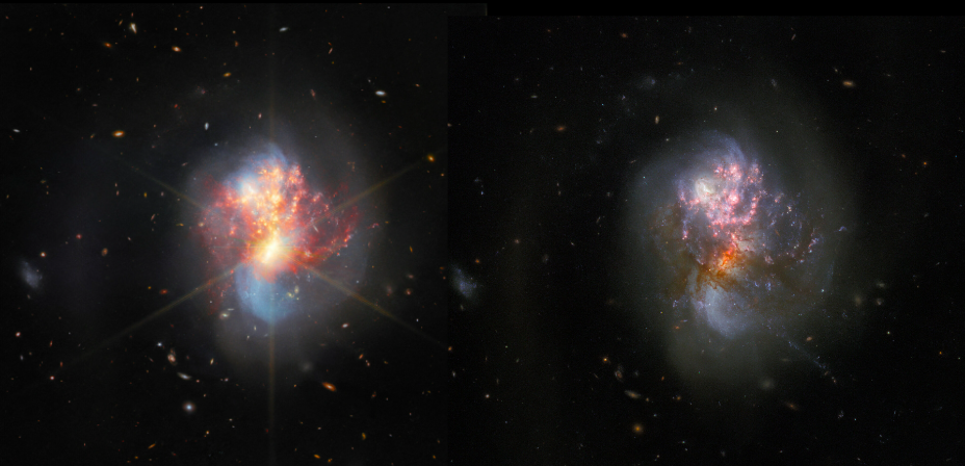Depending on which telescope used, merging galaxies appear slightly different.
The Webb Space Telescope imaged IC 1623 A and B (collectively, IC 1623) this summer. After first imaging them in 2008, Hubble has now captured a new image of the same pair. One telescope sees the universe primarily in visible and ultraviolet light, while the other sees it in infrared light.
Hubble and Webb telescopes provide spectacular views of the galaxy merger first discovered in 1897. In the constellation Cetus, the galaxies are about 270 million light years away from Earth. It takes about 20 times longer for stars to form in galaxies than in our Milky Way galaxy.
The wavelengths of infrared and near-infrared light that Webb sees are redder than the reddest visible light. As a result, the telescope can observe some of the oldest (redshifted) light in the universe, which dates back just a few hundred million years after the Big Bang.

Source: ESA/Webb, NASA & CSA, L. Armus & A. Evans; CC BY 4.0 Acknowledgement: R. Colombari
According to the original plan, the $10 billion Webb telescope would only last five years; due to the precision of the launch, the telescope’s lifetime could be twenty years.
In addition to Webb, its predecessor is still going strong. Hubble was launched in 1990 and has been one of humanity’s most useful tools for studying the cosmos ever since. Despite its aging, the telescope continues to produce images primarily at visible and ultraviolet wavelengths, which Webb does not. Therefore, NASA considers Webb to be Hubble’s successor rather than its replacement.

Source: ESA/Webb, NASA & CSA, L. Armus & A. Evans; CC BY 4.0 Acknowledgement: R. Colombari
The images of the galaxy pair show the capabilities of the two telescopes. Its infrared brightness makes it a suitable target for Webb. During the merger, intense star formation produces infrared light, but a thick band of dust has blocked much of the galaxy’s detail.
The Webb space telescope can see beyond the limits of Hubble’s vision because it can penetrate through clouds of dust. With its vibrant starburst of red and blue, it cuts right through the obfuscating dust that obscures Hubble’s image of the galaxy merger. As well as the background galaxies, Webb’s rendition is much clearer.
It is almost certain that Webb will continue to capture views first seen by Hubble, such as its recent view of the Pillars of Creation. Hubble helped pave the way for Webb wherever he goes next.
#webb #hubble #galaxies #telescope #space #nasa
















